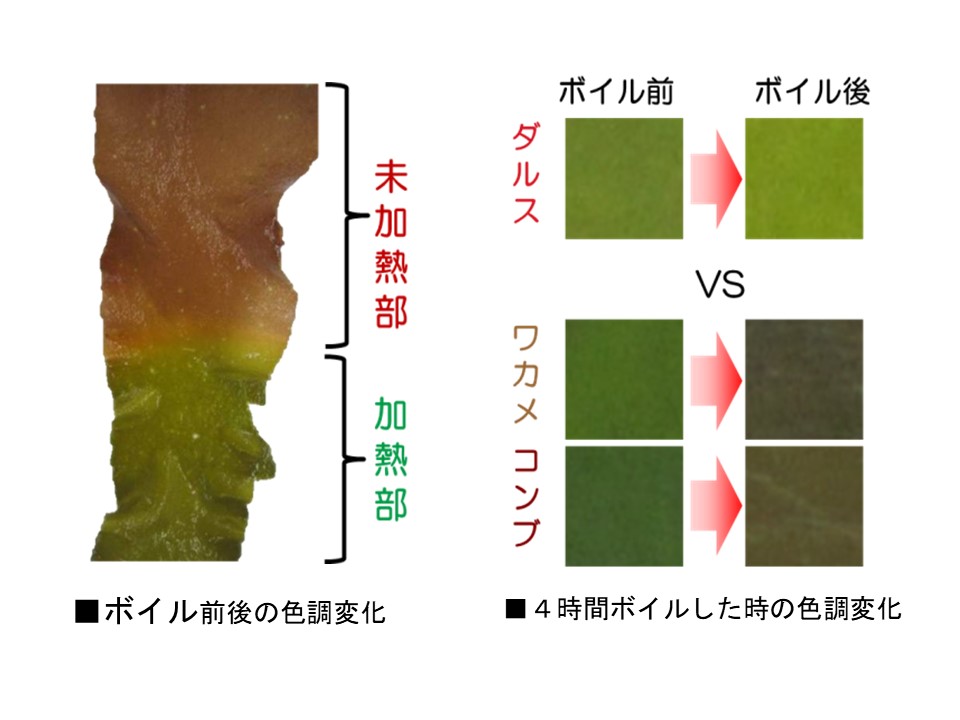Dulse is a type of cold-sea seaweed
classified in the same red algae family as laver, and has a reddish-purple
color immediately after harvesting. It is said to be widely distributed along
the Atlantic coast of North America and in northern Europe. In Ireland and
Canada, dulse has long been eaten fresh as a salad, and its dried form has been
used as a seasoning. Thus far, the use of dulse has been limited to fresh or
dried products. Perhaps for this reason, academic research seems to be almost
entirely limited to nutritional findings on the raw algae or on their drying
characteristics. On the other hand, Japan has a technology for boiling and
salting seaweeds, which is rare in the world, and we have excellent knowledge
and much experience. Therefore, as a new direction for the development of new
applications, we have attempted to explore the characteristics of the material
and its suitability for use from a new, uniquely Japanese perspective.
As mentioned above, dulse has a
reddish-purple color when raw, but it is not known what tint it develops when
boiled. We first observed the color change of dulse when it was heated in
boiling seawater. We found that dulse changed from the reddish-purple color of
the raw algae to a greenish-green color. However, there are many green-colored
seaweeds such as sea mustard and kelp, and vegetables such as chives and leeks,
which are commonly used in our daily lives. Therefore, we further investigated
to obtain a characteristic that is unique to dulse. As a result, we found that
the green color of dulse, which is produced by boiling and heating, has a
characteristic of being heat-resistant.
Only some of the results are shown here,
though, boiling commercially available boiled and salted kelp and sea mustard
in artificial seawater at 95°C for 4 hours causes grayish-browning and color
degradation, but a similar experiment conducted on boiled and salted dulse
confirmed that the beautiful green color was retained even after 4 hours of
boiling. Next, in order to determine the extent to which this green color is
resistant to heat, we observed the color tone after retort heating. Although
the results are not shown here, it was confirmed that the green color of dulse,
which had been once turned green by boiling in artificial seawater at 95°C, was
not significantly degraded even after heating, when it was packed in packaging
materials with 20 times the amount of the same solution and retorted at 120°C
for 10 minutes. These results indicate that the green color of dulse can be
retained even after retort heating, indicating that dulse has excellent heat
resistance.

■left figure ボイル前後の色調変化:
Color change before and after boiling
未加熱部: unheated part 加熱部: heated part
■right figure4時間ボイルした時の色調変化:
Color tone change after boiling for 4 hours
ボイル前: before boiling ボイル後: after boiling
ダルス: dulse ワカメ: sea mustard コンブ: kelp